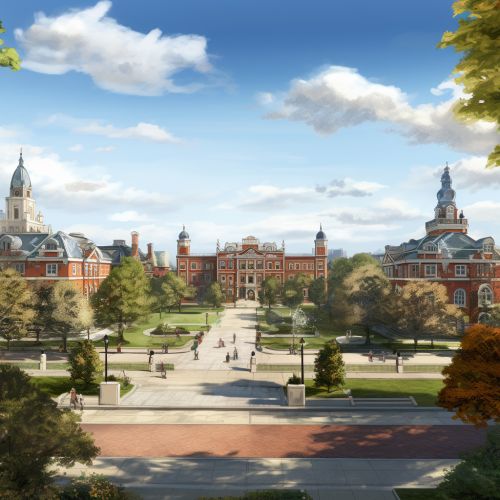Howard University
History
Howard University was chartered by the U.S. Congress in 1867. Named for General Oliver O. Howard, a Civil War hero and commissioner of the Freedmen's Bureau, the university was conceived as a theological seminary for African-American clergymen. It quickly expanded its mission to provide a comprehensive higher education for African Americans, particularly those in the South, who had few other opportunities for advanced study.


The university's first president, Charles B. Boynton, served from 1867 to 1874. He was succeeded by Edward P. Smith, who served until 1876. The university's third president, William W. Patton, resigned in 1889 after a scandal involving misappropriated funds. Patton was succeeded by Jeremiah E. Rankin, who served until 1903.
In the early 20th century, Howard University became a major center for intellectual life in the African-American community. It attracted a distinguished faculty, including philosopher Alain Leroy Locke, historian Carter Godwin Woodson, and surgeon Charles Richard Drew. The university also played a significant role in the civil rights movement of the 1960s, with students participating in sit-ins, freedom rides, and voter registration drives.
Academics
Howard University is classified as a research university with high research activity by the Carnegie Foundation. It offers more than 120 areas of study, including undergraduate, graduate, and professional degrees.
The university is organized into 13 schools and colleges, including the College of Medicine, the School of Law, the College of Engineering and Architecture, and the School of Business.
Howard University is known for its strong programs in social sciences, health professions, business, and communication, journalism, and related programs. It also has a strong commitment to community service, with more than 100,000 hours of service performed annually by students.
Campus
The Howard University campus covers 256 acres in the Shaw and Pleasant Plains neighborhoods of Washington, D.C. The campus includes more than 89 buildings, including academic buildings, residence halls, and administrative offices.
The main campus is home to several historic buildings, including Founders Library, which is a designated National Historic Landmark. Other notable buildings include the Mordecai Wyatt Johnson Administration Building, the Andrew Rankin Memorial Chapel, and the Charles R. Drew Hall.
Student life
Howard University has a diverse student body, with students from all 50 U.S. states and more than 70 countries. The university offers a wide range of student activities, including more than 200 student organizations, fraternities and sororities, and varsity sports teams.
The Howard University Bison compete in the NCAA Division I as a member of the MEAC. The university's athletic teams include men's and women's basketball, football, track and field, and swimming and diving.
Notable alumni
Howard University has a long list of distinguished alumni, including politicians, business leaders, entertainers, and scholars. Notable alumni include Supreme Court Justice Thurgood Marshall, Nobel laureate Toni Morrison, and former U.S. Secretary of State Colin Powell.
